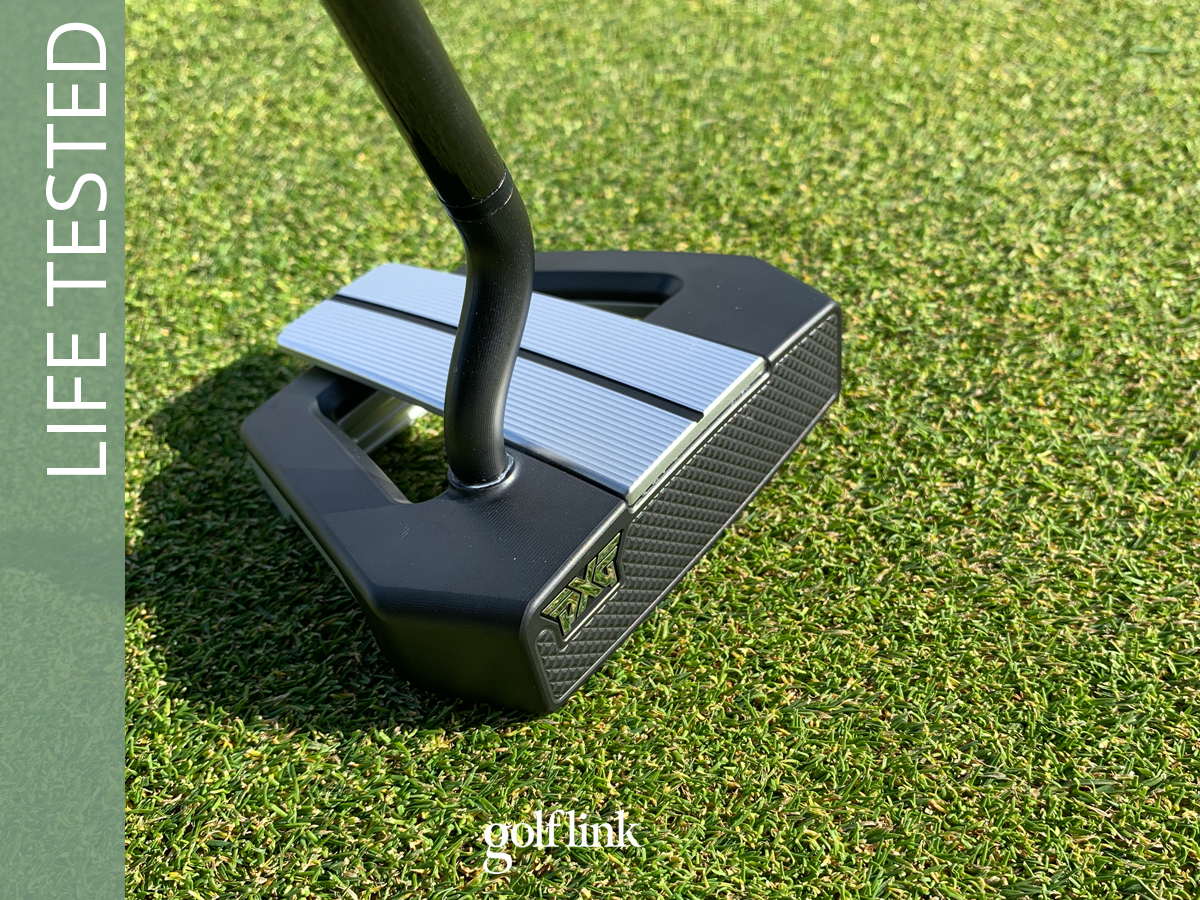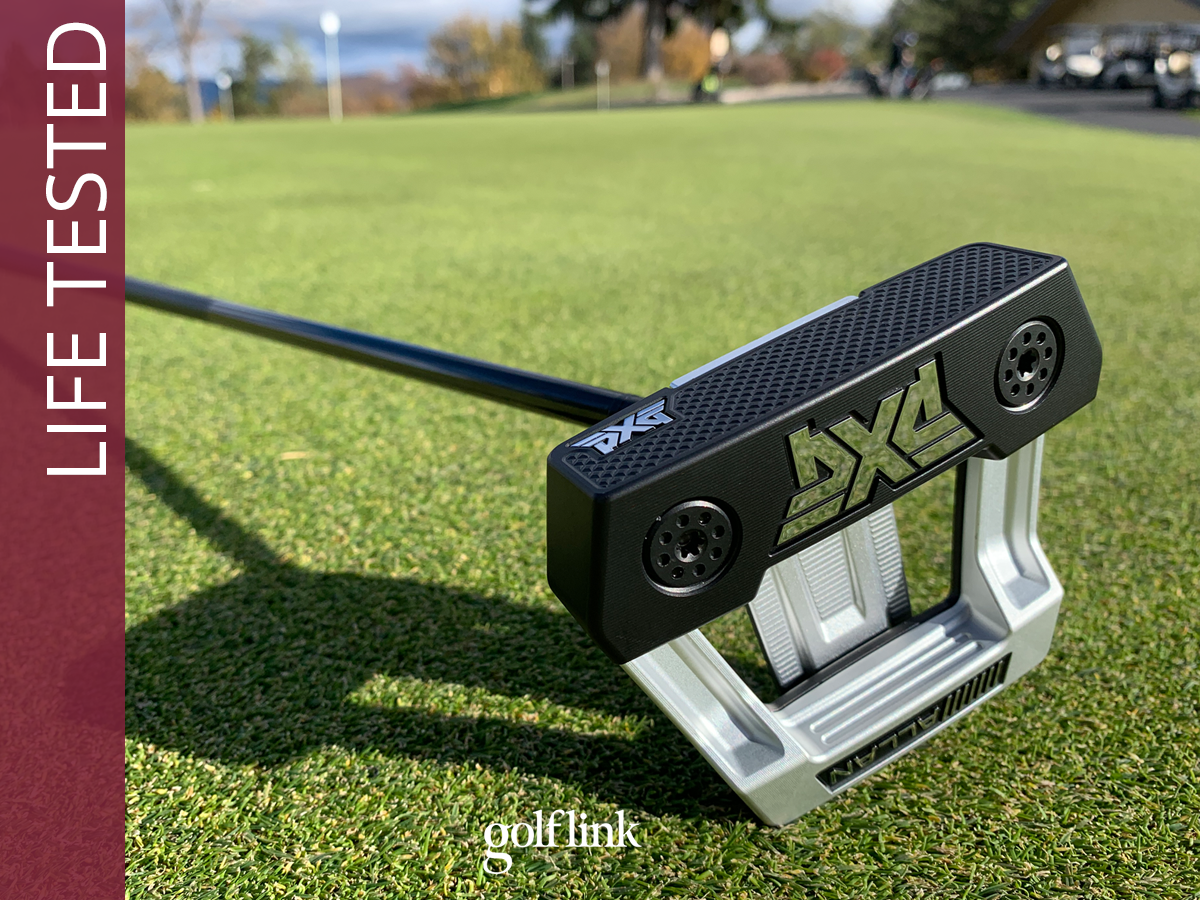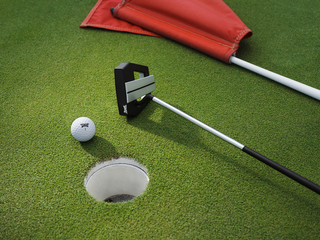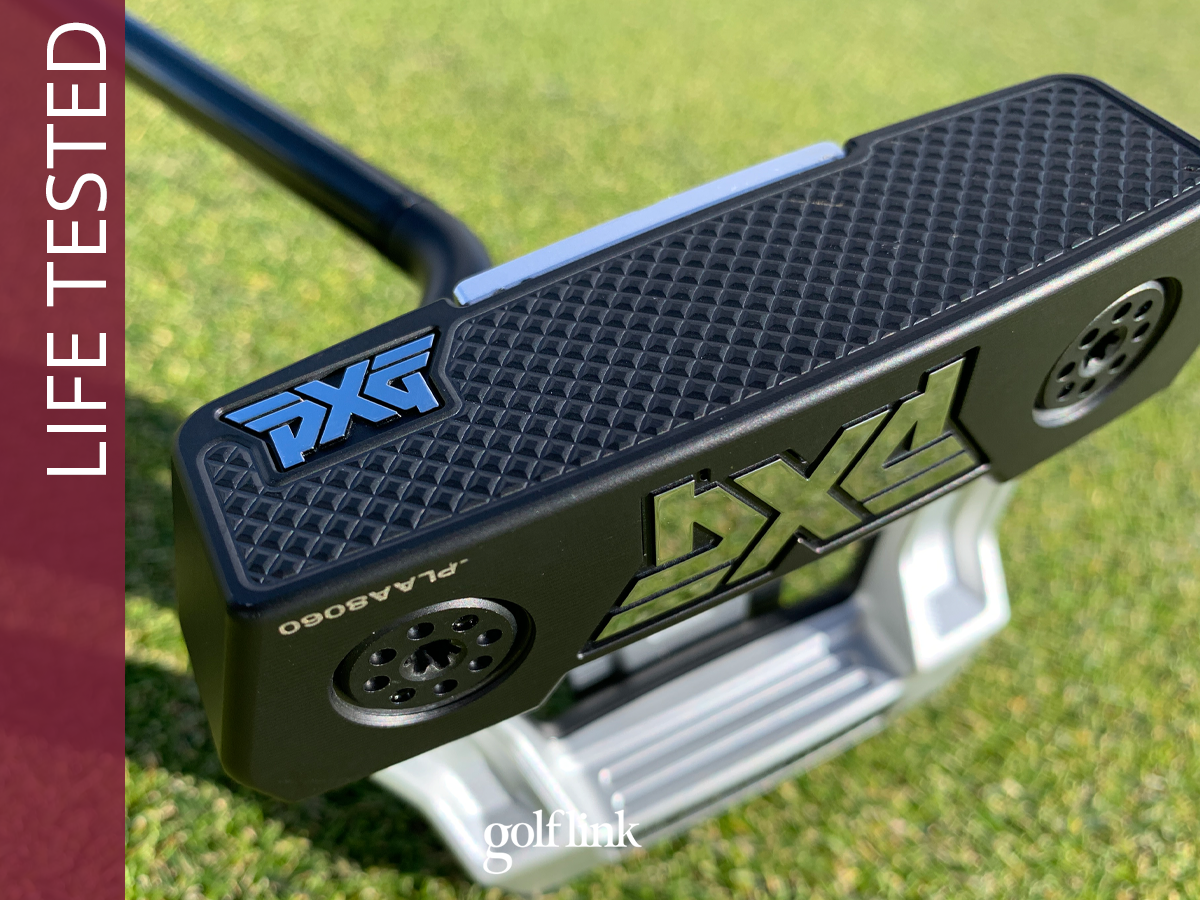PXG Allan Putter Life-Tested Review
How does PXG's zero torque Allan putter actually perform? We found out!

Zero torque putters represent a small but growing share of the putter market. Until recently only a couple of specialized manufacturers offered zero torque putters, but nothing that could pass the eye test as a normal-looking putter.
That segment is about to explode, and the PXG Allan putter is the first modern zero torque putter from a manufacturer that makes every club in the bag. Since Odyssey’s Backstryke in 2010, all the modern zero torque putters have come from manufacturers who make nothing but putters, the likes of L.A.B, Axis1 and Evnroll.
The deal with zero torque putters is simple. Regardless of whether you have a straight back, straight through putting stroke, or an arced stroke, the putter head is designed to naturally stay square to your stroke, and therefore square at impact. This also ensures that a zero torque putter fits your stroke even if your stroke changes over time.
I’ve been testing the PXG Allan putter over the last several weeks on the course and on the practice green. I also spoke with a few experts, including PXG design engineer Matt Andrews, who helped design the Allan putter, to find out if the Allan putter really can improve your putting. Let’s check it out.
Inside the PXG Allan Putter

SHOP PXG
Price: $449+
Profile: Zero Torque Balance
Pros:
- Easy to hit intended start line
- Fits any stroke
- Front to back sightline looks great at address
- Satisfying feel
- Looks more like a normal putter than most zero torque options
- Pick up pocket is pretty nifty
Cons:
- Distance control was a tough adjustment coming from a one-piece, toe hang blade
- Learning to remove your hands from the stroke may be another necessary adjustment
- Top end price makes it a significant investment
If you only look at the head, the Allan is actually a pretty standard-looking mallet putter, which is an improvement over competitors in the space. L.A.B is known for large heads and non-traditional shapes, and Axis1 has more traditional-looking heads but a hosel situation that is simply a non-starter for some players.

PXG Releases Zero Torque Allan Putter
The S-Hosel
The Allan putter achieves its zero torque balance with what PXG design engineer Matt Andrews considers one of the putter’s best design elements, the S-hosel.
“I think the greatest design element of Allan, albeit kind of goofy looking, is the S-hosel,” Andrews said. “It’s really nice because it allows us to have a full uninterrupted sight line from the front of the putter to the back, something more unique in the zero torque space.”
The hosel meets the head on the heel side, relatively close to where the hosel sits on a traditional putter, except the shaft is behind the face instead of in front of it.
The unique S-shape allows the lie angle to align with the center of gravity (CG) of the putter head, creating PXG’s zero torque balance and a putter that faces forward, or toe up, when you balance it off your fingertips.
The Allan putter can be built with a lie angle plus or minus two degrees from standard.
Inside The Head
The Allan has a multi-material, hollow body head. Behind the ultra-thin face is PXG’s S-COR polymer, which produces a nice feel at impact. The head is a combination of 303 stainless steel and 6061 aluminum, which PXG uses to distribute weight optimally.
As Andrews mentioned, that S-hosel allows for a long and uninterrupted sight line from the front of the putter to the back, which features a high-contrast black alignment line.
Zero Torque Performance

The Allan Putter features PXG's latest Pyramid Face pattern
Zero torque does not mean zero misses, but it can certainly give you an advantage on the greens.
When I first started practicing with the Allan, I noticed that I wasn’t starting putts online as easily as I anticipated. After a half-dozen unsatisfactory rolls, I pulled out my favorite putting tool, a metal yardstick, to pinpoint exactly what was going wrong.
Coming from a toe-hang blade, I tended to subtly close the face of the Allan before impact, resulting in slight pulls with the Allan in my hands. After rolling a few balls down the yardstick, I learned the feel of removing my hands from the stroke, and began rolling balls straight down the stick, and off the other end, consistently.
I share this anecdote to illustrate that you shouldn’t expect to make every putt just because the putter is designed to stay square. If you’re currently struggling because you rely on your hands to square the putter face at impact, whether you realize it or not, there could be an adjustment to removing your hands from the stroke, which will ultimately result in improved consistency.
If you’re not struggling and you use your hands in the stroke, a zero torque putter might not be for you, although if that’s the case you probably aren’t looking to replace your flatstick.
“If you're a good putter and you are very manipulative of your hands during the putting stroke, those people have a hard time picking up this putter and seeing a benefit,” Andrews said. “You really have to let the putter swing itself.”
Another benefit I found with the Allan was that it highlighted the accuracy (or lack thereof) of my green reading. I previously struggled to accurately assign blame for missed putts to stroke or read. With the Allan, it’s easy to hit the intended line, which then illustrates how accurate my read was.
That brings us to my final point that putting is a three-part recipe. You have to get a good read and judge the speed accurately, in addition to making a quality stroke that goes where you want it to. Using a zero torque putter like the Allan makes hitting the putt where you want to much easier, but you still have to win the other battles to make putts.
Overall Performance
Aside from the zero torque benefits of the Allan putter, here’s how it performed during my testing as a whole.
While these are only my personal results and opinions from a sample size that’s smaller than I’d prefer (I’d love to report back after 20 rounds but winter is coming), it’s the same feedback I’d give a curious friend over a post-round beer.
Performance Gains
On the course, I found my biggest gains with the Allan putter came from holing more mid-range putts. In two tracked rounds with the Allan, I enjoyed a 50% increase in putts made from 6-24 feet compared to my previous two rounds.
This trend carried over to my practice sessions as well. Using the Stack Putting app, which simulates 18 holes worth of putts, I performed better with the Allan putter than any other putter I’ve tested this year, five putters in total, excelling most with the Allan putter from outside of 10 feet.
Distance Control Struggles
On the downside, I struggled with distance control when switching from the blade I had been using to the Allan, and those struggles led to an increase in 3-putts. Some 3-jacks came from outside 40 feet, which I can live with, but a few came from hitting 15-20 footers six feet past the hole and missing the comebacker, a flaw I wasn’t previously prone to.
Distance control is a skill that can be honed with practice, so I’m not overly concerned, especially considering this was an abrupt and drastic putter swap. However, if you’re considering switching from a vastly different style of putter to the Allan, I would plan on somewhat of an adjustment period and perhaps some distance control practice to get your speed dialed in.
Forgiveness
The forgiveness with the Allan putter is solid across the face. PXG’s S-COR polymer saves mass in the head, which allowed PXG engineers to boost MOI (forgiveness) by repositioning that weight.
One of the first putts I hit with the Allan putter was way off the heel, and I was pleasantly surprised that it still almost got to the cup. It was certainly a better result than I deserved, but it was still never going to drop into the hole.
Look & Feel

Three things stand out to me about the look and feel of the Allan putter. From a feel perspective, it’s softer-feeling at impact thanks to the ultra-thin face, S-COR polymer, and PXG’s pyramid face pattern. There is also a stiffer, premium multi-material shaft upgrade available with the Allan putter, which provides extra stability and feel. I had the opportunity to hit putts with both the stock and the multi-material shaft, and it’s easy to feel the difference between the two. I prefer the feel from the premium shaft, but it’ll be up to you to decide whether or not it’s worth the extra $89.
From a looks perspective, we’ve got the front-to-back sightline and the S-hosel.
I really like the high-contrast alignment line that runs through the putter head. It’s easy to get comfortable over the ball with that sightline, especially If you use an alignment line on your ball.
Although Andrews called the S-hosel “goofy looking” I found it a rather unobtrusive method to building a zero torque putter. Sure, it’s untraditional compared to the putters we’re used to looking down at, but compared to other zero torque putters out there, it’s decidedly boring, in a good way.
The first thing I noticed with S-hosel and its orientation behind the face was how it impacts ball position in setup. When you set the putter in its natural position on the ground and take your stance, the ball ends up farther forward in your stance than it would when you’re using a putter with the face behind the shaft.
Since I had the benefit of working with a PXG fitter my first time experimenting with the Allan putter, I brought this up, and he simply advised following the putter’s lead to a more forward ball position.
Price & Value
SHOP PXG
Price: $449+
If you’re shopping for a new zero torque putter today, you can expect to spend $450 or more, which is right where the Allan putter checks in, and is comparable to PXG’s competitors in the space, L.A.B, Axis1, and Evnroll.
That’s certainly a hefty investment, so it’s a good idea to consider what other areas of your game you might invest in. If your putting is inconsistent, and you’re debating between a zero torque putter like the Allan or a new driver to replace one that’s less than five years old, I’m confident you’ll see greater performance gains from the putter.
If you’re convinced of the benefits of a zero torque putter but spending anywhere near $500 on a putter is simply out of the question, that’s okay too. You can bet on a surge in the zero torque putter category in 2025 and beyond, which should include more budget-friendly options. It remains to be seen what those options will look like and what premium features you may have to sacrifice, but this category is growing, not shrinking.
The Bottom Line
Zero torque putters are here to stay. The surge is coming and PXG’s Allan putter delivers looks that make the category more palatable with feel and performance that give it validation.
There’s plenty of technology packed into the Allan putter beyond the zero torque profile, but that doesn’t mean you’re automatically going to make every putt if you make the switch. When you do miss, however, PXG put a nifty, and quite functional, ball-picker-upper on the bottom of the Allan.
Switching to the Allan may require some work to simplify your stroke (learning not to manipulate the face with your hands) and some distance control practice, plus a financial commitment, but I think players who make the switch and put in that effort will enjoy better, more consistent putting.